

The world’s leading Scottish-interest magazine



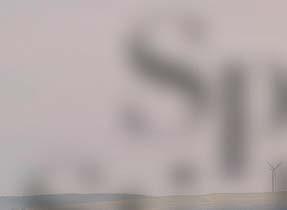



of Wallace and Bruce Spectacular Stirling





GLENEAGLES
100 years of the Glorious Playground

Meet the makers of authentic family tartans Clan kilts



Mary, Queen of Scots
Tragic victim or ruthless ruler?



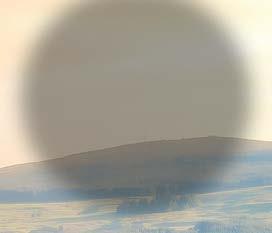

Eric Liddell’s remarkable story OLYMPIC CHAMPION

SHORTBREAD
Scotland’s iconic sweet treat


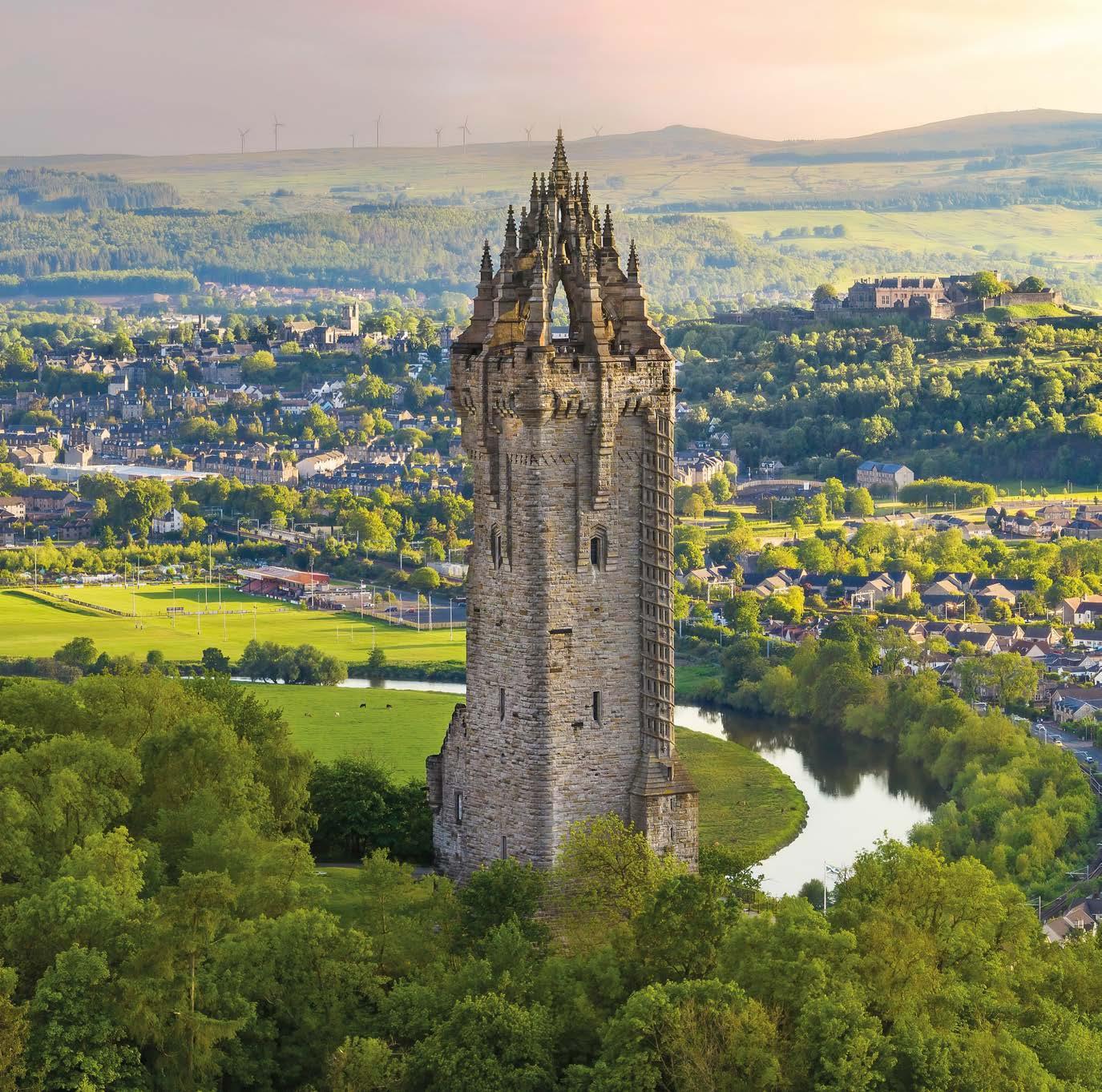
ANCESTRY • TRAVEL • CLANS • HISTORY
ISSUE 134 May/Jun 2024 £5.50
WIN A foodie escape to Skye heroes

CLAN COURIER
Georgian glamour comes to Edinburgh and your chance to discover the Hebrides’ past
News & events © ROYAL COLLECTION TRUST/HIS MAJESTY KING CHARLES III 2024

GLAMOROUS GEORGIANS
A new exhibition at The King’s Gallery at the Palace of Holyroodhouse in Edinburgh, shines a spotlight on Georgian style and fashion, with key pieces telling the story of King George IV’s historic visit to Scotland in 1822.
Visitors to the exhibition will be able to see the full-length portrait of the kilted king in his Royal Stewart tartan, as painted by Sir David Wilkie, plus admire the set of accoutrements supplied to him by George Hunter & Co Edinburgh, which include a broadsword decorated with Scottish emblems, a belt and dirk.
Among the almost 100 other artworks from The Royal Collection are a rarely seen portrait of Queen Charlotte by Thomas Gainsborough (main picture), while a pair of baby shoes (inset) belonging to George IV’s only child, Princess Charlotte, are enough to make any heart melt.
Style & Society: Dressing the Georgians, is the first exhibition at The King’s Gallery (formerly known as The Queen’s Gallery) since reopening after an 18-month period of closure and runs until 22 September 2024.
rct.uk/visit/the-kings-gallery-palace-of-holyroodhouse

[EXHIBITION]
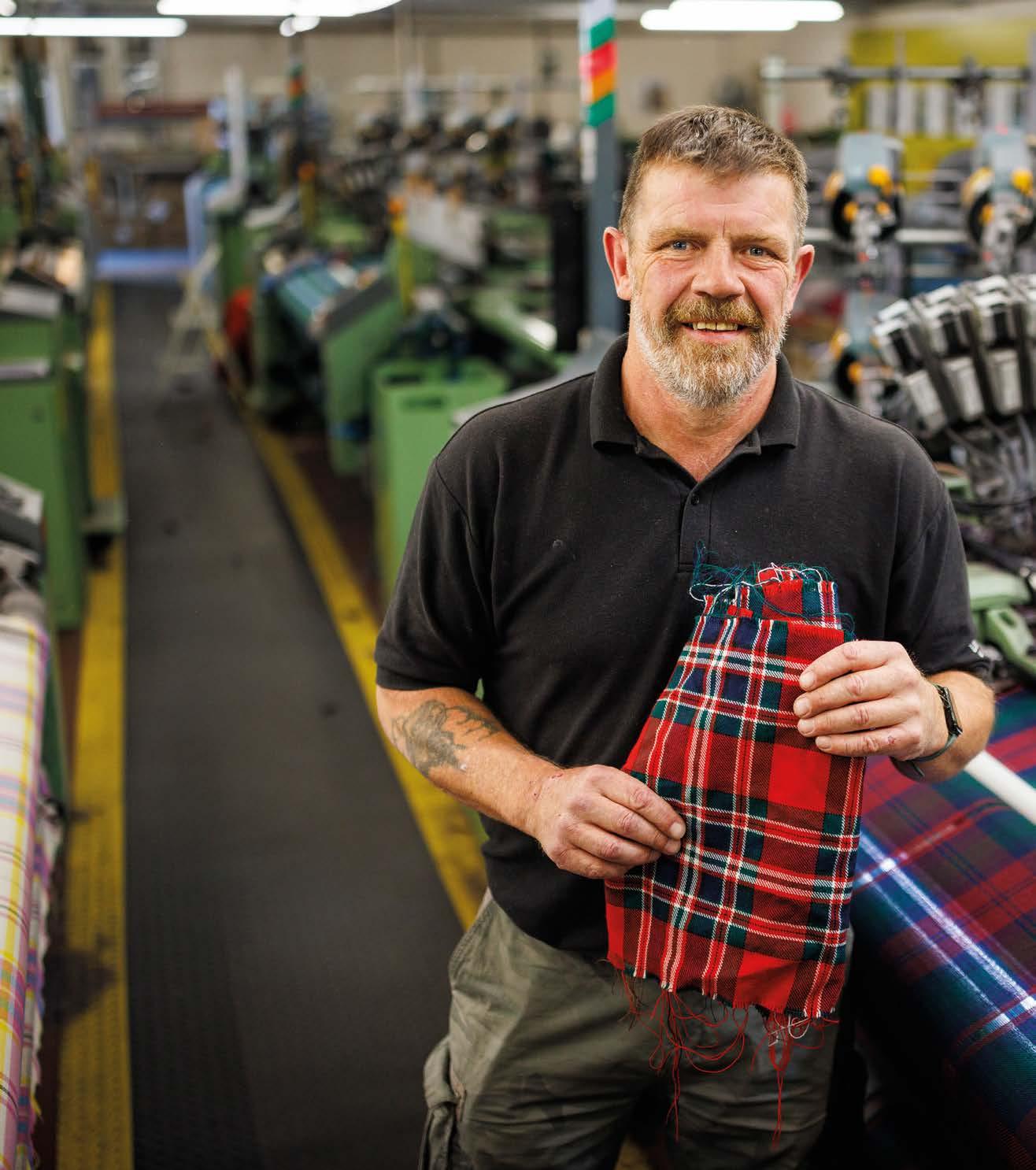
THE TARTAN MASTERS
We go behind the scenes at Lochcarron of Scotland – a stalwart in the tartan industry

Words and photos by JEREMY FLINT
26 Scotland MADE IN SCOTLAND | Lochcarron


The rich tapestry of Scottish tartans, with their distinct chequered patterns, have woven their way into Scottish culture to such an extent that the word ‘tartan’ is now a byword for all things Scottish.
One company that has seen this firsthand is Lochcarron of Scotland, which has been weaving tartan for over 130 years.
Starting in the Scottish Borders, the origins of the brand can be traced back to founder Peter Anderson, of Galashiels, who began working in the woollen mills for which the town was famous at the age of 12 before setting up his own business in 1892. The enterprise was initially modest with three hand looms until Peter acquired Huddersfield Mill (which he later renamed Bridge Mill) in 1907 with 12 water powered looms. In 1947 Anderson and his sons sold the business to John Morris Buchan, another respected textile entrepreneur who adopted the Lochcarron name.
The Buchan family taught locals the art of spinning and weaving before expanding the operations to several locations within Galashiels as well as small weaving mills in the picturesque villages of Lochcarron, Plockton, Dornoch and Newton Stewart.
As demand for the company’s tartan and accessories grew, Lochcarron relocated to Selkirk in the Scottish Borders.
Today, Lochcarron of Scotland lays claim to being the world’s leading manufacturer of tartan and its reputation for creating quality, authentic Scottish tartan has led to a global customer base, with 500 tartans in its canon.
Today, the weaving mill has over 70 staff creating, making, warehousing and marketing extensive tartan collections. Customers can order a tartan scarf, bag, or tie (plus lots more) from the company’s website; purchase directly from the heritage store just outside the village of Lochcarron; or for something special, even design their own tartan.
Hughie MacDonald has been a weaver at Lochcarron for five years and loves working at the mill.
“It’s just like a family, everyone knows each other, and we all get on well, working as a team and supporting each other,” he says.
Hughie began working as a tuner at Lochcarron 25 years ago. He then had a long hiatus, working in the building trade and as a bus driver, before returning to the fold.
Hughie now weaves and tunes the machines and enjoys the mechanical side of things; operating and fixing the looms while ensuring they are always running efficiently.
“When I started [at Lochcarron] in the late 1980s, the nearby riverside was full of mills and we used old Hattersley machines and shuttles,” he says.
Scotland 27
Words by JANICE HOPPER
THE GLORIOUS PLAYGROUND
When it opened 100 years ago, Gleneagles was the epitome of 1920s decadence
The grand opening of the Gleneagles Hotel and Golf Resort in Perthshire on 7 June 1924 was a momentous occasion. Its centenary this year celebrates more than a hotel, and more than bricks and mortar; Gleneagles is a Scottish institution with a rich history.
On the day itself, a warm Saturday in early summer, band leader Henry Hall and his impeccably dressed Gleneagles Hotel Dance Band, performed at the opening Gala Ball. The ensemble is remembered for lively foxtrots such as Mad (Cause You Treat Me This Way) and Any Old Time, and the hotel opening made history when it was broadcast across the nation on BBC Radio.
A glittering gala dinner was attended by 200 guests, who mingled with visitors from nearby grand houses. The following day the press was given a tour of the hotel, with the media hailing Gleneagles ‘the eighth wonder of the world’ and the ‘Riviera of the Highlands’.
Gleneagles was the brainchild of Donald Matheson, general manager of the Caledonian Railway Company, who imagined an elegant country house hotel combined with quality golf courses. Matheson enlisted the skills of James Braid, a ve-time winner of The Open, to design and create The King’s and The Queen’s courses in the hotel grounds. The courses opened in May 1919, ve years before the hotel, establishing Gleneagles as a gol ng destination from the get-go. This photo (right) which appears in James Collard’s forthcoming book Gleneagles: Stories from the Glorious Playground, published by Rizzoli New York, shows spectators in the 1920s arriving at Gleneagles to watch a golf tournament.
























Famous faces who have ocked to Gleneagles through the years include Vivien Leigh, Laurence Olivier, Rita Hayworth, and Queen Elizabeth II.
Despite its glamorous reputation, the resort has experienced occasional leaner periods. During WWII it became a military hospital and then a miners’ rehabilitation centre. However, when it reopened in 1947, despite adhering to rationing orders, its kitchens still managed to turn out tempting dishes such as Côte de Boeuf Rôti. S
Find out more about Gleneagles resort and its anniversary celebrations at gleneagles.com
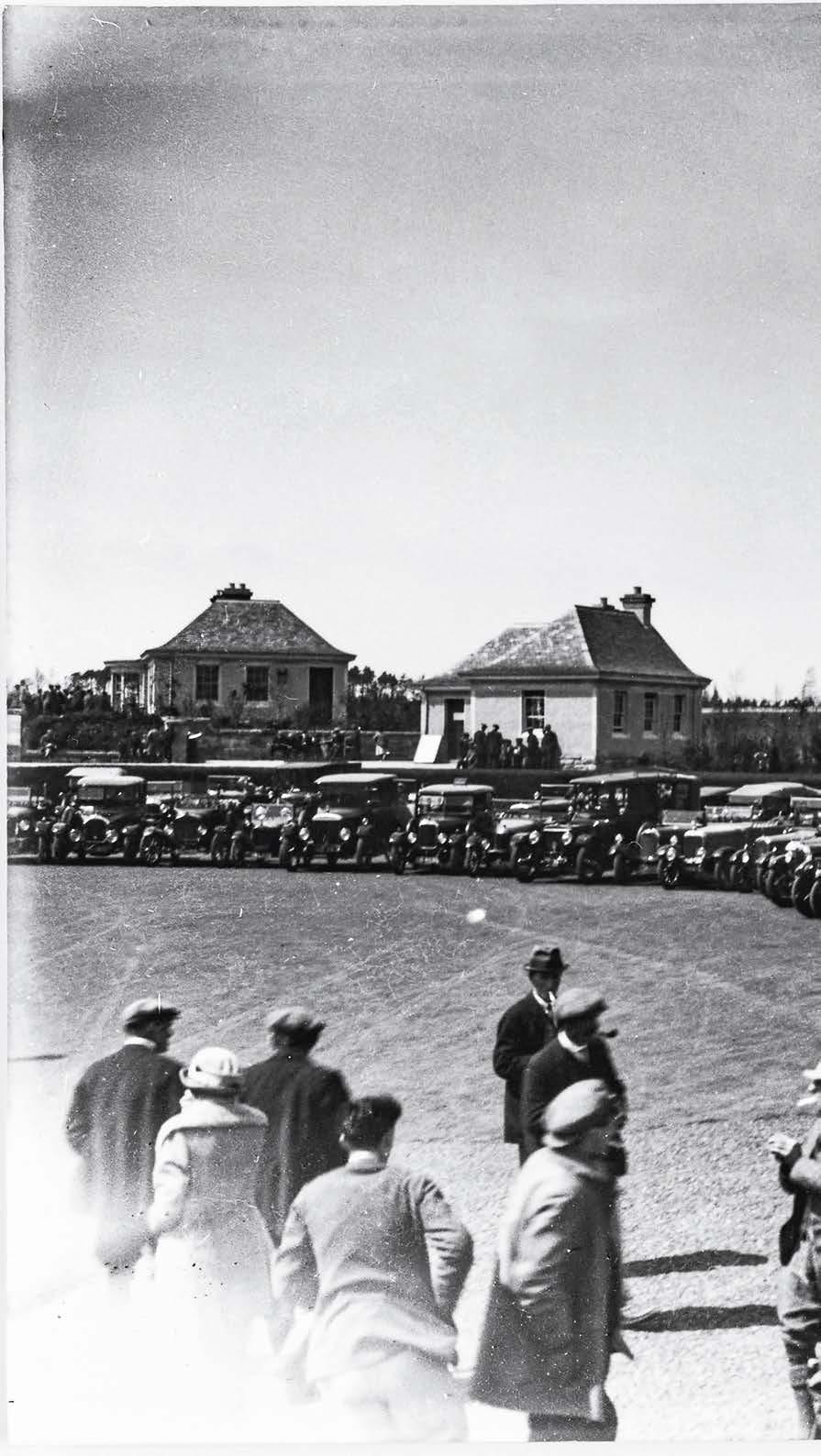
36 Scotland
© GLENEAGLES HOTEL

Scotland 37 Historic moments | archives
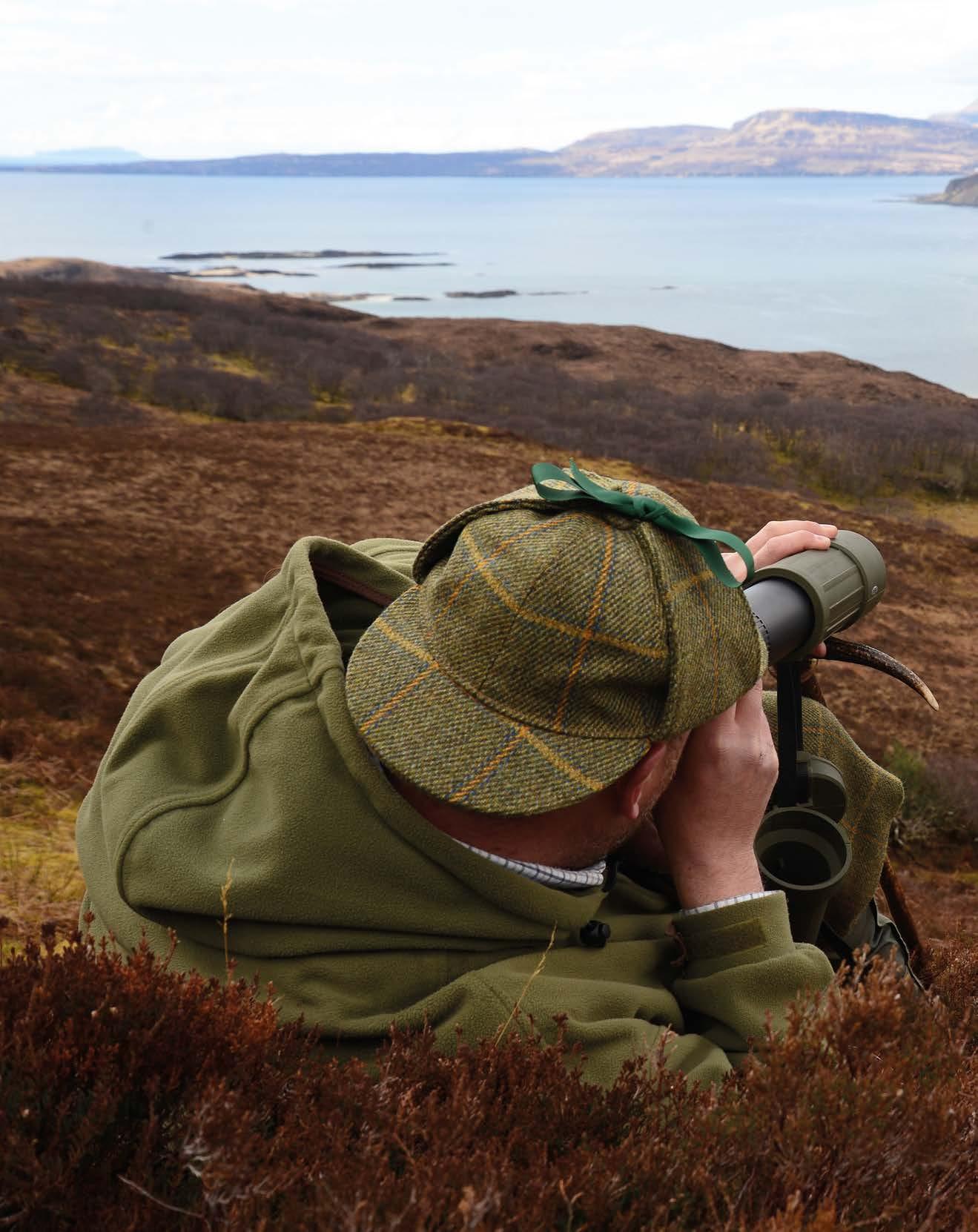
travel © IAN DAGNALL COMPUTING/ALAMY
LEFT TO RIGHT: Guests can try deer stalking on the Fearann Eilean Iarmain estate with gamekeeper Scott; Robert Peake the Elder’s painting Henry Frederick (1594-1612), Prince of Wales, with Sir John Harington (1592-1614), in the Hunting Field, 1603
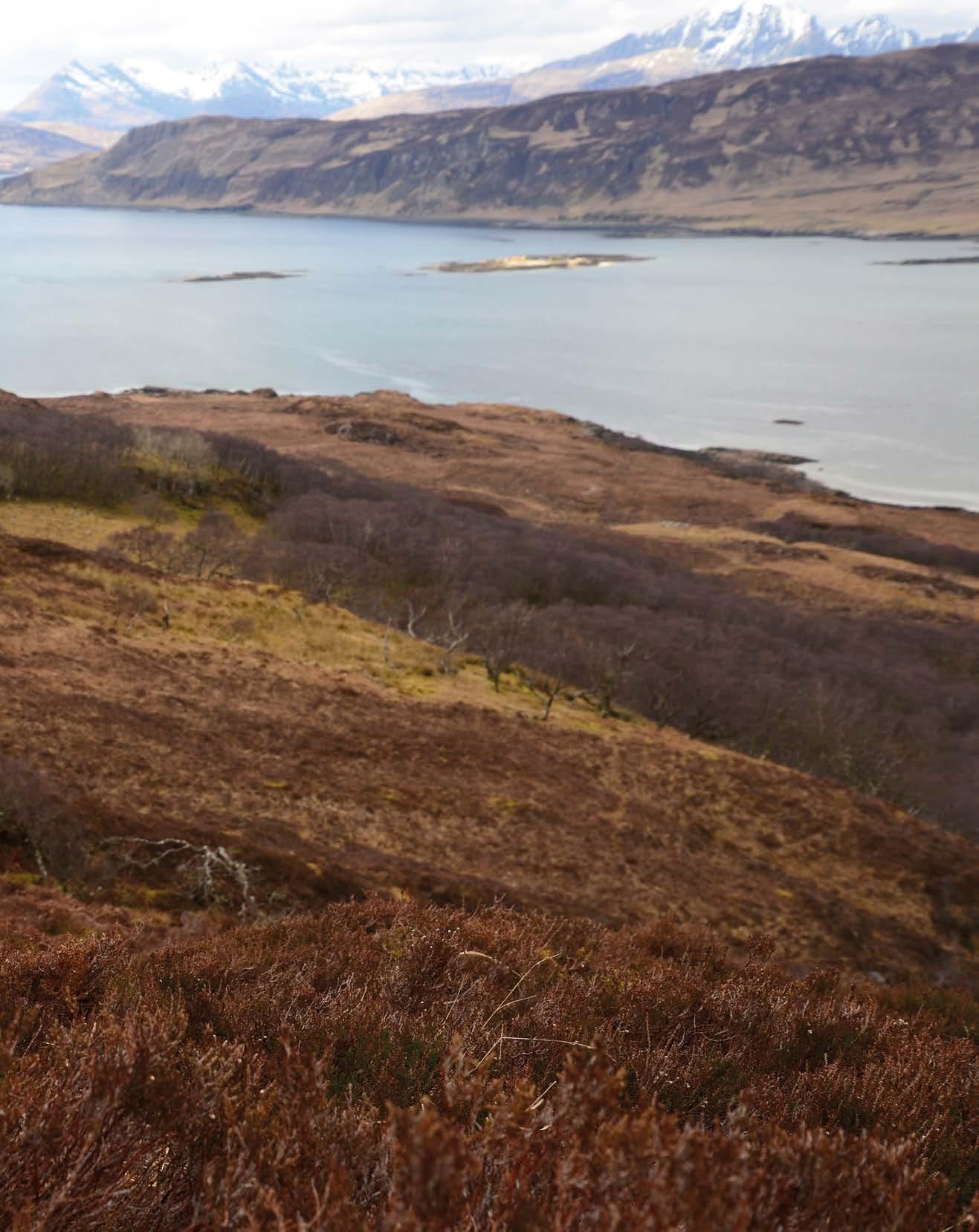
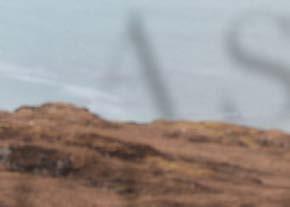
 Words by SALLY COFFEY
Words by SALLY COFFEY

A ChanceSporting
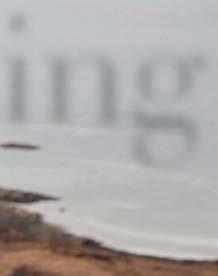
Once the preserve of nobles, today Scotland’s great estates are wonderful places to try your hand at country sports – here are some of the best

travel

52 Scotland


































































